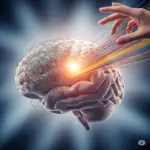Diverting attention from patients’ concerns can cause inefficiencies in medical treatment. While manually entering notes into the eClinicalWorks EMR (ECW) leads to practitioners’ burnout. Medical practitioners must not ignore their emotional and physical exhaustion or forcefully struggle with it. Such an approach can cause significant documentation errors and lower patient satisfaction.
According to a study, burnout providers can not provide adequate emotional support to patients. To resolve this problem, health professionals need an advanced practice management system (PMS) with AI-driven features.
What’s New in eClinicalWorks Ambient AI with Sunoh.ai?
ECW introduced an AI-powered medical transcription feature that understands natural language and documents details in real time. The largest ambulatory cloud can produce output in different languages such as English, Spanish, Portuguese, or Arabic. It adopts a standard medical format and categorizes information accordingly.
Newness in eClinicalWorks is much more than clinical documentation automation. It also has the ability to record lab tests, medication orders, imaging, referrals, and follow-ups. Practitioners can review and make changes in the document as per their requirements.
How transcription feature work in eClinicalWorks EMR?
Integration of Sunoh AI allows eClinicalWorks (ECW) EMR software to transcribe conversations between healthcare providers and patients. Eliminating the manual tasks of categorizing important information while automating the long processes. It saves practitioners from the manual clinical documentation processes, improving their focus on patient care.
When a practitioner receives a new patient, the ECW allows them to review their profile quickly. Saving from delays in diagnosing diseases and suggesting the right treatment. The transcription feature minimizes the chances of errors. Practitioners can also change the treatment plan as required.
The integration of Sunoh AI with ECW is like having an assistant note-taker. Helping billers and coders to approve their claims from insurance companies quickly.
Why do medical coders need organized data?
Medical coding also plays a role as a secret code between payers and healthcare providers. Data in properly organized form helps medical coders to quickly turn information into codes such as ICD-10-CM, HCPCS Level II, or CDT.
Furthermore, insurance companies use these codes to get information about the treatment a patient receives during a visit. So, health practitioners do not face delays in the amount of disbursements.
What if the information goes wrong?
Improper categorization of information, such as handwritten or scattered data, makes it difficult for medical coders to write codes. The chances of the following errors increase:
- Writing wrong code.
- Missing important procedures or diagnoses.
- Payment delays or denials.
Problems in health coding
Healthcare coders deal with various challenges when they have to write codes. Before anything else, they must fulfill the ethical code while ensuring data accuracy. For that, they need data in a standard format. However, updates in coding structure, communication gap with health practitioners, and receiving incomplete information make their task more challenging.
Unclear medical records can cause significant financial loses to healthcare organizations. Medical coders need clear information from practitioners to write accurate codes. Conflicts occur in the documentation processes because health staff do not have much time to write notes. Because they focus more on patient care at that time.
Keeping up with the updates in regular coding guidelines is also a significant challenge for medical coders. Change in payer policies, billing steps, and coding rules disturb the setup in which healthcare providers document their services. Developing a new method that becomes feasible for everyone is challenging for medical coders.
Fulfilling the unique coding requirements of different insurance payers is another challenge for medical coders. They must follow the policies of an individual insurance company to ensure claim approval. It increases their administrative workload and increases the chances of inconsistent documentation.
Role of ECW to overcome medical coding challenges
eClinicalWorks EMR resolves the complexities in the complete procedures of medical coding. Integration of the latest transcription feature in the software promotes accuracy to prevent code denials. The feature actively contributes to the revenue growth of healthcare organizations. Let’s find out how it turns challenges into opportunities:
Provides complete and transparent medical notes
The use of ambient listening technology in the software provides easy-to-read doctor notes. It creates convinience in maintaining digital medical records and saves time for doctors and nurses. It turns voice notes into structured data, strictly adhering to set guidelines.
It saves medical coders from reading doctors’ handwritten notes and provides accurate details to insurance companies. The transcript clearly defines the diagnoses, adopted procedures in the treatment, and follow-up details.
eClinicalWorks EMR offers medical dictation solutions and also contains the ability to identify missing codes. The software presents accurate information to practitioners with detailed records and health issues.
Assessing the patients’ condition, the software assigns a risk adjustment factor (RAF) score that explains the health condition. A higher score means a patient needs more care. The feature also allows health practitioners to track patient health improvement.
Fewer coding errors
ECW is a smart coding tool that provides by step-by-step guide to medical coders. It analyzes the doctor’s notes and provides automated code suggestions. The advanced coding software also alerts the medical coders when they make a mistake. For example, if they add a code that does not match with patients’ data, the software will point it out.
eClinicalWorks EMR is trained on up-to-date coding libraries, following the latest ollow the latest ICD-10, CPT, and HCC guidelines. Speeding up the insurance processes, complying with current rules.
Better work efficiency with ECW EMR
As an electronic medical record (EMR) system, ECW improves the work efficiency of various departments. Offering cost-effective solutions to healthcare professionals while enabling them to focus on patient care.
The ECW EMR also improves communication among health professionals, allowing them to share clinical notes securely. It is like each team member playing their part to improve patient health. eClinicalWorks EMR delivers in the following ways:
- Saves time.
- Minimizes errors.
- Improves collaboration among team members.
- Enabling doctors to offer consultancy services from anywhere.
- Remote patient monitoring.
The software creates a unified system and connects all healthcare organization staff. So the workflow becomes faster and smoother. It also features a check-in and out system and maintains the patients’ arrival and departure records.
ECW simplifies the billing process
eClinicalWorks enables healthcare organizations to send their claims quickly and without mistakes. The system catches mistakes before sending, saving from rejections. Adhering to all government and insurance companies’ rules, helping them to develop organization value while increasing chances to get extra money from special programs.
ECW allows customization
Healthcare professionals can set up ECW as per their requirements. It features support for more than 40 types of specialists. For example, a cardiologist can find tools that help them manage various aspects of cardiac care. Similarly, a skin specialist can discover relevant features that match the area of expertise.
Ending note
The advanced transcription capabilities simplify the complex medical coding tasks, allowing healthcare organizations to improve patient care. It massively reduces the administrative burden on healthcare staff while minimizing the chances of errors.
The clinical documentation software is trained on natural language processing (NLP) and large language models. Incorporating the latest technology allows it to understand human language with a high accuracy rate.








